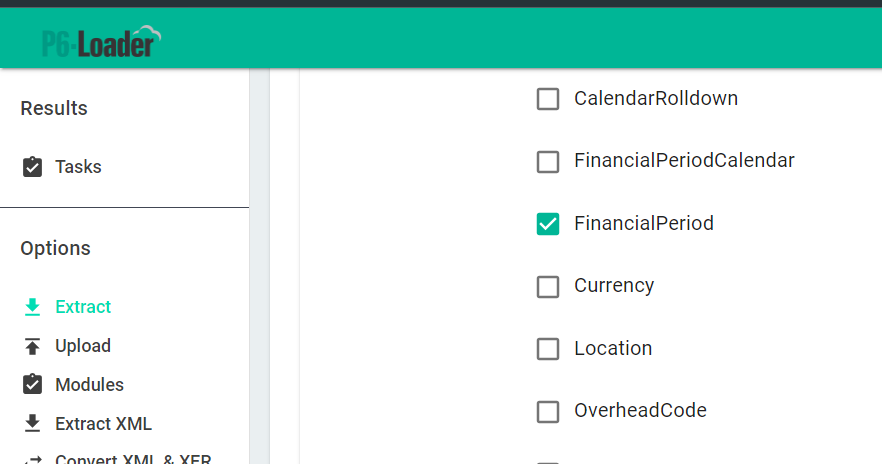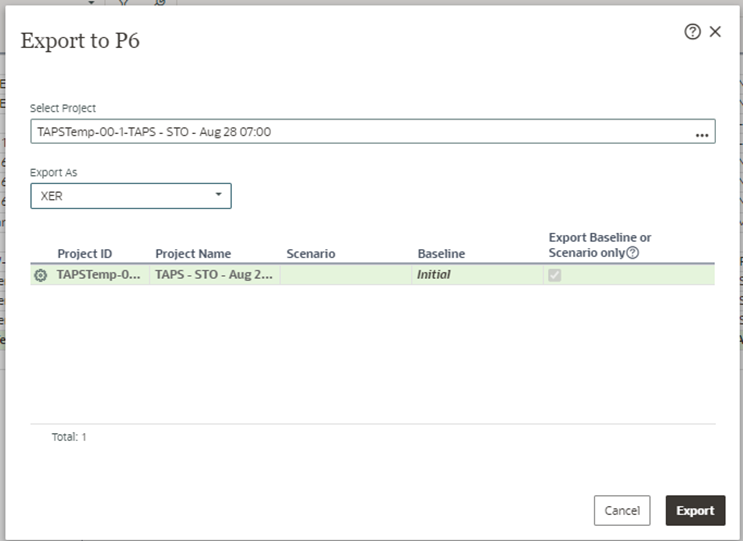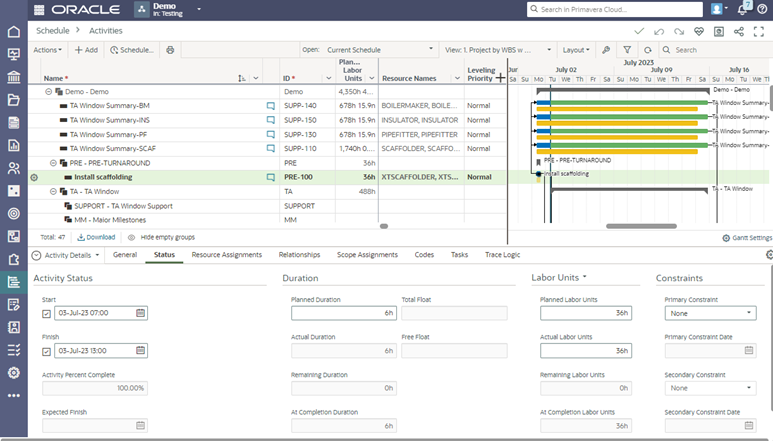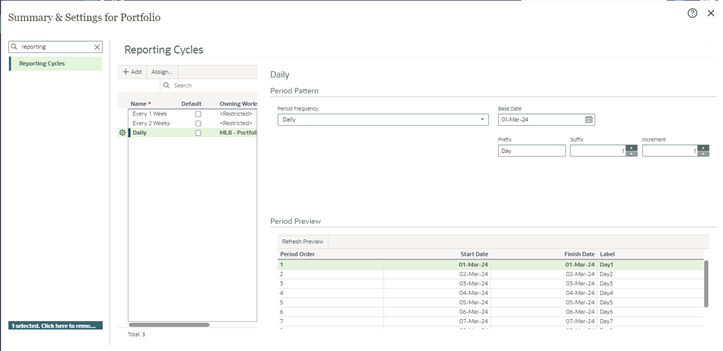Learn About Creating Direct Activity-to-Activity Logic Connections Between Activities in Different Projects in OPC
Are you looking to create direct activity-to-activity logic connections between activities in different projects in Oracle Primavera Cloud (OPC)? In my observations, if you are familiar with Primavera P6 (as an example), you will see that connections between activities in different projects are available in the Activities tab without necessarily opening both projects. However, in OPC you will notice a decided difference.
Written by Mary Lynn Backstrom, PMP, PMI-SP, PMI-BA – Implementation Specialist
on Tuesday, 27 August 2024.
Posted in Oracle Primavera Cloud (Prime)
Better resource assignment and unique loading options, record action column, and backup of layouts
Written by Ravi Wallau

Better resource assignment and unique loading options, record action column, and backup of layouts
New Features
-
Better resource assignment and unique loading options - an auto-assignable UDF in the resource assignments can be used to match UDFs when loading and is assigned automatically when loading and extracting resource assignments.
-
Record action column - adds the ability to specify which action is expected from that record. For example, if you want to ensure that a given user can only be updated but not inserted, the action would be UPDATE.
-
Layout backup option - you can now include layouts, reports, changes and filters in the daily P6-Loader backup.
-
Export shift/shift periods from Primavera P6 and convert shift and shift periods from XER/XML files.
-
Allow custom "CLEAR" cell values, and the value <CLEAR> is the default value to clean up P6 field values, UDFs, and codes.
on Tuesday, 30 July 2024.
Posted in News, P6-Loader
Configured fields are created in the context of an object and can be used in views on pages that support that object.
Configured fields in Oracle Primavera Cloud (OPC) can be created at the Workspace level. The configured field can be created to calculate a formula and populate the configured field with the result.
Written by Mary Lynn Backstrom, PMP, PMI-SP, PMI-BA – Implementation Specialist
on Wednesday, 24 July 2024.
Posted in Oracle Primavera Cloud (Prime)
Learn about the new features in P6-Loader v14.
Emerald just released P6-Loader v14 that features additional enhancements/functionality based on feedback from one of our clients.
The client wanted to add duplicate resources to activities using P6-Loader and also control what type of action to perform on a row in the P6-Loader sheet.
Written by Sue Fermelia - Implementation Specialist
on Wednesday, 17 July 2024.
Posted in P6-Loader
A schedule scenario is a what-if version of the schedule which allows the user to analyze and apply adjustments without affecting the current schedule. Using schedule scenarios allows you to create and manage multiple planning schedules, and modify details as evaluation and anticipation of different situations and project conditions occur, including resource and role requirements, response plans, delays, and other project issues. Most of the data in the scenario can be modified in the scenario as you would within the current schedule. The source of a scenario cannot be modified after the scenario is added.
Written by Mary Lynn Backstrom, PMP, PMI-SP, PMI-BA – Implementation Specialist
on Thursday, 11 July 2024.
Posted in Oracle Primavera Cloud (Prime)
Below is a high-level look at some of the new functionality available in Oracle Primavera Cloud (OPC) v24.6.
In a Program, the user can now use ‘schedule with multiple float paths’ functionality for any size of program.
Schedule the projects using multiple float paths and calculate the end date.

Written by Mary Lynn Backstrom, PMP, PMI-SP, PMI-BA – Implementation Specialist
on Sunday, 16 June 2024.
Posted in Oracle Primavera Cloud (Prime)
Keep in mind that when creating an activity view, customized formatting is available to help improve readability and keep focus on specific elements. You can apply a different font color, add a background color, or use filter options to create conditional formatting. Customization of table formatting is available on the Activities and Task List pages. It is saved in the view. Formatting is available for the cell, row, or column.


Written by Mary Lynn Backstrom, PMP, PMI-SP, PMI-BA – Implementation Specialist
on Wednesday, 05 June 2024.
Posted in Oracle Primavera Cloud (Prime)
As an Oracle Primavera Cloud (OPC) user you have an inbox in the software. Have you had a look at the information available there? To access your inbox, click the View Notifications icon and then click View All in Inbox.

Written by Mary Lynn Backstrom, PMP, PMI-SP, PMI-BA – Implementation Specialist
on Friday, 24 May 2024.
Posted in All Articles, Oracle Primavera Cloud (Prime)
I need to add a project in Oracle Primavera Cloud (OPC) manually (directly). What is the process? In OPC, a project can be created in a few ways: added directly, moved from project proposal to an approved project via a workflow process, copied from a project template, or imported into OPC from an external application.
To add a project directly, we will use the Add Project wizard to add details, user and group access, permissions, and companies to the new project. A new project can be created without data, or you can copy data from an existing project or template. Keep in mind that data stored at the workspace level and relationships between projects are not available to copy.
Access Projects and then View All Projects.

Written by Mary Lynn Backstrom, PMP, PMI-SP, PMI-BA – Implementation Specialist
on Thursday, 16 May 2024.
Posted in All Articles, Oracle Primavera Cloud (Prime)
Financial periods must be created manually in P6. It is a tedious process mainly because it seems that it would be so easy to automate it! Well, with the P6-Loader, you can.
In the P6-Loader, the financial period is a global object you can export.

Written by Ravi Wallau - Integration Specialist
on Monday, 06 May 2024.
Posted in All Articles, P6-Loader
Some new functionality has been added to the new release of Oracle Primavera Cloud (OPC) version 24.4.
The user can now
export baselines and scenarios as projects in XER format. The P6 XER format does not support baselines, and Primavera P6 does not support scenarios, but both can be exported from OPC as projects to be imported into P6 though. This will assist with the Time Impact Analysis and any subcontractor status update processes when contracts require that data be exchanged in XER format.
The Export to P6 dialog now allows selection of baselines and scenarios when Export format XER or Compressed XER is selected. The Export Baseline or Scenario Only is auto checked and read only when a baseline/scenario is selected.

Written by Mary Lynn Backstrom, PMP, PMI-SP, PMI-BA – Implementation Specialist
on Tuesday, 23 April 2024.
Posted in All Articles, Oracle Primavera Cloud (Prime)
Commonly, new activities need to be added to your project as it progresses. What functionality does Oracle Primavera Cloud (OPC) offer to assist as new activities are not automatically added to the project baseline? You need to add the activities to the baseline, so OPC provides functionality to add them from the current schedule. OPC offers functionality to handle updates of the existing baseline with new activities without the requirement of creating a new baseline. When you must carry out this task, you need functionality to assist making the process easy to use as well as not labor intensive. Let’s have a look at what is involved.
Open the Activities page (Schedule App):

Written by Mary Lynn Backstrom, PMP, PMI-SP, PMI-BA – Implementation Specialist
on Thursday, 18 April 2024.
Posted in All Articles, Oracle Primavera Cloud (Prime)
Reporting cycles in Oracle Primavera Cloud (OPC) are defined to create reporting periods used to plan and update progress on scope assignments and to store period performance for schedule activities. Reporting cycles can be set to occur daily, weekly, semi-monthly, or monthly depending on the reporting requirements for a project.
Workspace Report Cycles:

Written by Mary Lynn Backstrom, PMP, PMI-SP, PMI-BA – Implementation Specialist
on Friday, 12 April 2024.
Posted in All Articles, Oracle Primavera Cloud (Prime)
Below are a few of the many updates for Oracle Primavera Cloud (Prime) v24.2. This is not an all-inclusive list of the updates, but a few of the ones you may find helpful.
To start, you can now import a baseline or scenario of a P6 XML to create a new project or to create a scenario or baseline of an existing project. Any associated baseline categories will also be imported. Food for thought: this can provide additional flexibility on how baselines and scenarios are shared between owners, general contractors, and subcontractors.

Written by Mary Lynn Backstrom, PMP, PMI-SP, PMI-BA – Implementation Specialist
on Friday, 05 April 2024.
Posted in All Articles, Oracle Primavera Cloud (Prime)
Range Copy/Range Paste, Project Count, CPP Format Export, Import from Excel
There are several new pieces of functionality in P6 Professional v23.10. We will start with a high level look at a few of the elements. One of the new pieces of functionality added allows users to paste multiple data entries from Excel directly into P6 Professional using range copy/range paste. Copy/Paste of a range is available in both directions: Excel to P6 or P6 to Excel. From P6 to Excel select the range, right click and select Range Copy (or use Shift+Ctrl+C), and then paste the range into Excel.
From P6 to Excel select the range, right click and select Range Copy (or use Shift+Ctrl+C), and then paste the range into Excel.

Written by Mary Lynn Backstrom, PMP, PMI-SP, PMI-BA – Implementation Specialist
on Tuesday, 26 March 2024.
Posted in All Articles, Primavera P6











